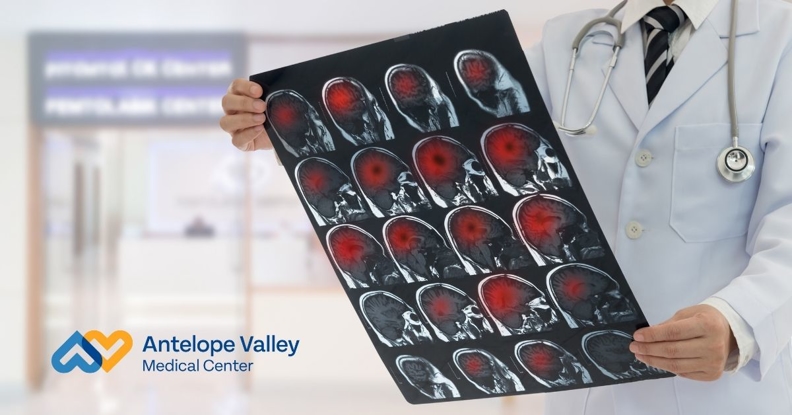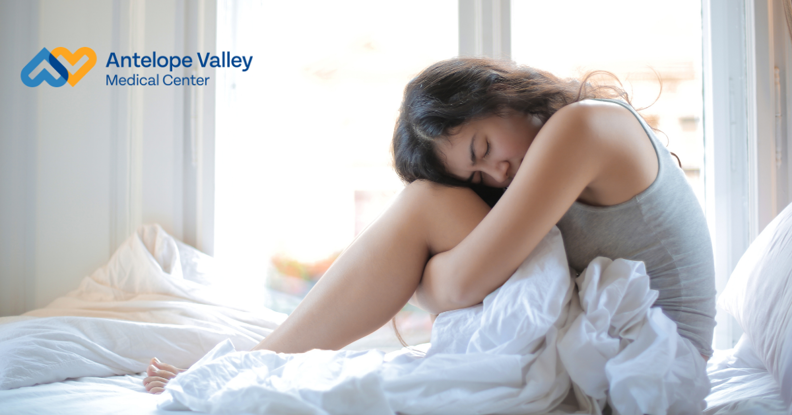How to Properly Treat Sunburns
- Category: Sunburns
- Posted On:
- Written By: Antelope Valley Medical Center
.jpg)
How to Protect Your Skin
Sunburn is a common, painful experience for many during Antelope Valley’s sunny summers. More than just an uncomfortable annoyance, sunburn represents real skin damage caused by overexposure to ultraviolet (UV) radiation from the sun. This damage not only causes immediate symptoms like redness and pain but also increases the risk of long-term effects, including premature skin aging and skin cancer.
Causes and Effects of Sunburn
Sunburn occurs when your skin absorbs more UV radiation than it can handle, prompting your body to produce melanin in a defensive effort. While melanin offers some protection, it’s often not enough—particularly for individuals with fairer skin. Those with lighter complexions naturally have less melanin and are more prone to burning.
Environmental factors in Antelope Valley exacerbate the issue. The high altitude means you’re physically closer to the sun’s rays, while the dry desert climate and reflective surfaces like sand, dry soil, or water can amplify UV exposure. Contrary to popular belief, cloud cover doesn’t offer reliable protection. Up to 80% of UV rays can still reach your skin on an overcast day.
Symptoms typically begin a few hours after exposure and worsen over the next 24 to 48 hours. These include redness, heat, tenderness, and sometimes peeling or blistering. Severe sunburns may result in swelling, fever, chills, nausea, or even dehydration. Repeated sunburns, especially those causing blisters, can significantly increase your risk of developing skin cancers, including melanoma. They also accelerate the process of photoaging, leading to wrinkles, leathery texture, and discoloration.
Identifying Your Skin’s Vulnerability
Understanding your skin’s natural resistance to UV damage is essential in prevention. The Fitzpatrick scale classifies skin into six types based on how it reacts to sun exposure:
Type I: Very fair skin, always burns, never tans
Type II: Fair skin, usually burns, tans minimally
Type III: Medium skin, sometimes mild burn, tans uniformly
Type IV: Olive skin, rarely burns, tans easily
Type V: Brown skin, very rarely burns, tans very easily
Type VI: Dark brown or black skin, never burns, deeply pigmented
Those in the I–III range are particularly vulnerable and should use higher-SPF sunscreen and more rigorous protection. However, even darker skin tones are susceptible to UV damage and should not skip sunscreen or other protective measures.
Immediate Sunburn Treatment
Once you’ve identified a sunburn, take action quickly. First, remove yourself from further sun exposure. Staying indoors and avoiding additional UV damage is critical to healing.
To soothe the affected skin:
Take cool (not cold) baths or showers. Avoid soaps or body washes, which may irritate.
Apply cold compresses to sunburned areas for 10–15 minutes at a time.
Use moisturizers with ingredients like aloe vera, soy, or calendula to reduce inflammation.
Avoid lotions or sprays containing alcohol, lidocaine (unless approved), or benzocaine.
Hydration is key. Sunburn draws moisture away from your skin, so drink plenty of water to rehydrate. Applying alcohol-free moisturizers immediately after bathing can help lock in moisture and support skin healing.
If you’re experiencing significant discomfort, over-the-counter pain relief such as ibuprofen or acetaminophen can help reduce swelling and pain. For localized pain, a topical cream containing lidocaine may be used, but only as directed and never on broken skin.
Do not pop blisters—they’re your body’s way of protecting injured tissue. Instead, protect them with a clean, soft covering. If blisters rupture, keep the area clean and monitor closely for infection.
Promoting Healing and Preventing Complications
Healing from sunburn takes time, but you can support your body’s recovery with some simple strategies:
Natural remedies: Honey has antibacterial properties and can soothe mild burns. Oatmeal baths are excellent for reducing itchiness and irritation.
Nutritional support: Eat foods rich in antioxidants like Vitamin C (found in citrus fruits, strawberries, bell peppers) and Vitamin E (found in nuts, seeds, and leafy greens). These nutrients support cell repair and reduce inflammation.
Monitor for infection: Signs of infection include increased redness, swelling, pus, and pain. If you notice any of these, contact a medical provider immediately.
In some cases, topical steroid creams may be recommended by a healthcare provider to reduce inflammation. These should not be used without professional advice, especially on broken or blistered skin.
Preventing Future Sunburn
Sunburn prevention is an everyday responsibility, especially in sunny areas like Antelope Valley. To reduce your risk:
Avoid direct sunlight between 10 a.m. and 4 p.m., when UV rays are strongest.
Use broad-spectrum sunscreen with SPF 30 or higher. Apply it 15–30 minutes before going outdoors and reapply every two hours—or more frequently if you swim or sweat.
Choose water-resistant sunscreen for outings to Palmdale Lake, Drytown Water Park, or Littlerock Dam.
Wear sun-protective clothing, such as tightly woven fabrics, wide-brimmed hats, and UV-blocking sunglasses.
Seek shade whenever possible, and don’t rely on cloud cover as protection.
Debunking Sunburn Myths
Let’s clear up some common misconceptions:
Butter or petroleum jelly: These trap heat and may worsen a burn.
“Base tans” protect your skin: False. A tan is a sign of skin damage, not protection.
Only fair-skinned people need sunscreen: Also false. Every skin tone is vulnerable to UV damage and skin cancer.
Rely on dermatologist-approved practices for safe sun exposure—don’t take shortcuts based on anecdotal advice.
When to Seek Medical Attention
Certain symptoms require professional evaluation. You should seek medical care if you experience:
Severe blistering over large areas
High fever, chills, nausea, or vomiting
Confusion or dizziness
Signs of dehydration, like dry mouth, dark urine, or rapid heartbeat
Any skin changes, like new moles or spots, that appear after a burn
Prompt care is essential in preventing complications and ensuring your skin heals properly.
Antelope Valley Medical Center: Your Partner in Skin Health
Sunburns are painful and potentially dangerous—but with the right care, they are treatable and preventable. At Antelope Valley Medical Center, our skilled providers are here to help you recover, prevent future damage, and screen for any long-term effects such as skin cancer.
Whether you’re nursing a painful burn or simply need guidance on safe sun habits for your family, our team is ready to support you with expert care tailored to the unique conditions of the Antelope Valley.
Call 661-949-5000 today to schedule an appointment or learn more about our dermatologic services and sun safety resources. Let us help you protect your skin and enjoy our desert sunshine with confidence and care.


.jpg)
